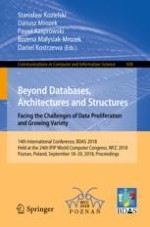2018 | Book
Beyond Databases, Architectures and Structures. Facing the Challenges of Data Proliferation and Growing Variety
14th International Conference, BDAS 2018, Held at the 24th IFIP World Computer Congress, WCC 2018, Poznan, Poland, September 18-20, 2018, Proceedings
Editors: Stanisław Kozielski, Dariusz Mrozek, Paweł Kasprowski, Bożena Małysiak-Mrozek, Daniel Kostrzewa
Publisher: Springer International Publishing
Book Series : Communications in Computer and Information Science
